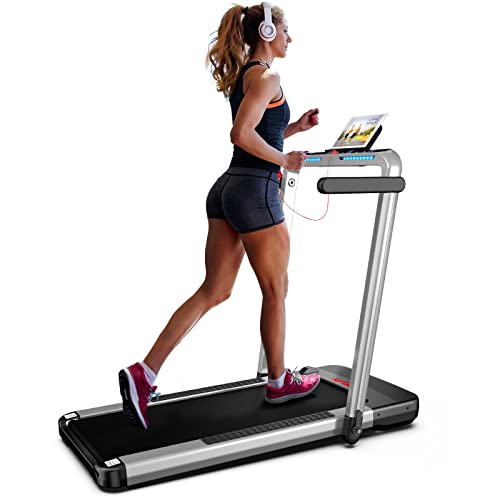Treadmills: A Comprehensive Guide to Understanding Their Functionality, Benefits, and Appropriate Selection
Introduction
Treadmills have actually become a staple in contemporary physical fitness routines, both in homes and gyms worldwide. They use a convenient and effective method to keep cardiovascular health, increase endurance, and assist in weight management. This short article explores the various types of treadmills, their benefits, functions to consider when buying, and some FAQs to assist users in making informed decisions.
Kinds of Treadmills
When it pertains to selecting a treadmill, it is important to comprehend the various types offered in the market. Here are the main categories:

1. Handbook Treadmills
- Mechanism: These treadmills have a simple style and depend on the user's efforts to move the belt.
- Pros: More budget-friendly, quieter operation, no electrical energy required.
- Cons: Limited features, might not offer the same range of exercise intensity.
2. Motorized Treadmills
- System: Powered by a motor that drives the belt, enabling users to stroll or perform at a set pace.
- Pros: Greater range of speeds and inclines, equipped with many features such as heart rate monitors and workout programs.
- Cons: More pricey and might need more maintenance.
3. Folding Treadmills
- System: Designed for those with restricted area, these treadmills can be folded for easy storage.
- Pros: Space-saving, typically motorized, versatile functions.
- Cons: May be less resilient than non-folding models.
4. Business Treadmills
- System: High-quality machines created for usage in health clubs and physical fitness centers.
- Pros: Built to stand up to heavy use, advanced features, typically include warranties.
- Cons: Pricey and not perfect for home usage due to size.
5. Curved Treadmills
- Mechanism: A distinct design that allows users to move the belt using their own energy.
- Pros: Offers a more natural running experience, promotes better running type.
- Cons: More costly and can be noisier.
| Treadmill Type | Pros | Cons |
|---|---|---|
| Handbook | Budget friendly, no electrical power required | Limited features |
| Motorized | Variety of speeds, advanced features | Maintenance required |
| Folding | Space-saving, often motorized | May lack toughness |
| Business | Built to last, professional-grade features | Expensive |
| Curved | Natural running experience, promotes excellent form | Higher price |
Advantages of Using Treadmills
Treadmills provide various advantages that can add to one's general health and physical fitness goals. A few of these advantages consist of:
- Convenient Workouts: Treadmills permit users to work out inside despite climate condition.
- Cardiovascular Health: Regular use can improve heart health by increasing endurance and promoting healthy flow.
- Weight Management: Effective for burning calories, which helps in weight loss and management.
- Customizable Workouts: Users can manage speed, slope, and period to create personalized workout experiences.
- Security: Treadmills provide a predictable surface, lowering the risk of falls compared to outdoor running.
- Multifunctional: Many treadmills come with functions like heart rate displays, workout programs, and even entertainment systems.
Picking the Right Treadmill
When selecting a treadmill, possible purchasers should think about a number of key aspects:
Features to Consider:
- Motor Power: Typically determined in horse power (HP), a motor strength of a minimum of 2.5 HP is recommended for serious runners.
- Belt Size: A longer and wider belt accommodates different stride lengths, providing convenience throughout workouts.
- Incline Settings: Adjustable slope functions imitate outside hill running and can increase workout intensity.
- Weight Capacity: Ensure the Treadmill Compact can support the user's weight for security and durability.
- Console Features: Look for user-friendly control panels, workout programs, and Bluetooth compatibility for streaming music or other functions.
Budget Considerations
- Under ₤ 500: Entry-level manual treadmills ideal for casual walkers.
- ₤ 500 - ₤ 1,500: Mid-range motorized treadmills that provide more functions and better sturdiness.
- ₤ 1,500 - ₤ 3,000: High-end models with sophisticated technology, larger motors, and longer warranties.
- Over ₤ 3,000: Commercial-grade treadmills perfect for frequent usage in health clubs or training centers.
Often Asked Questions (FAQs)
1. How frequently should I utilize a treadmill?
It is suggested to use a treadmill at least three to five times a week, including different intensity levels for best outcomes.
2. Can I slim down by utilizing a treadmill?
Yes, constant usage of a treadmill can add to weight-loss, particularly when integrated with a well balanced diet plan and strength training.
3. What is the best speed to walk on a treadmill for beginners?
A speed of 3 to 4 miles per hour is a suitable range for novices. It's necessary to start slow and gradually increase rate as comfort and endurance enhance.
4. Do I require to use a treadmill if I already run outdoors?
Utilizing a treadmill can provide fringe benefits, such as regulated environments and differed exercises (slope, intervals) that are not always possible outdoors.
5. How do I preserve my treadmill?
Routine upkeep includes lubricating the belt, cleaning up the deck and console, and inspecting the motor for ideal efficiency.
Treadmills are vital tools for those looking to enhance their physical fitness levels in a regulated and hassle-free way. With various types readily available, comprehending their functions and advantages is crucial for making an informed purchase. By considering personal exercise needs, space accessibility, and spending plan restrictions, individuals can discover the most ideal treadmill that fits their way of life. Incorporating treadmill exercises into a balanced physical fitness regimen can result in improved health outcomes and an enjoyable workout experience.
